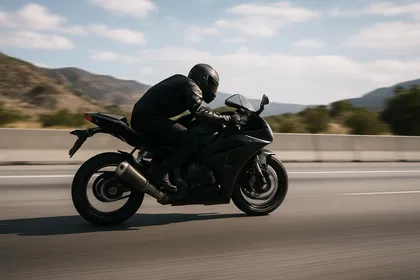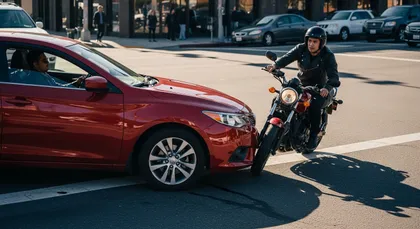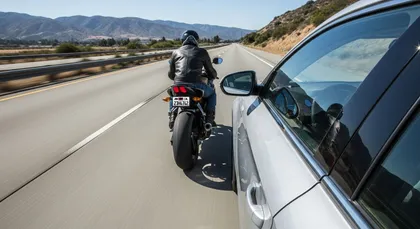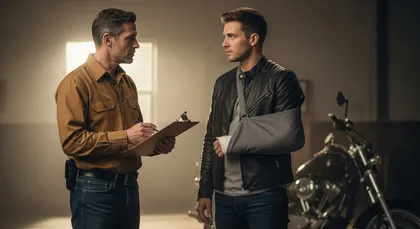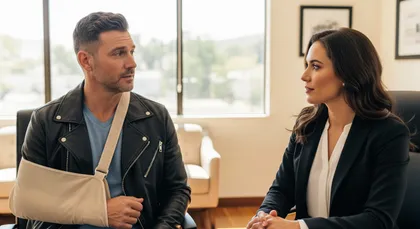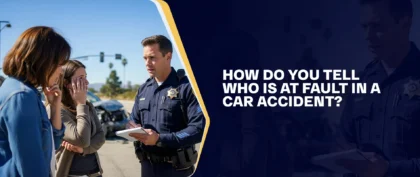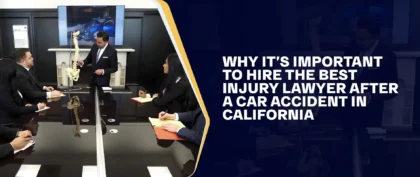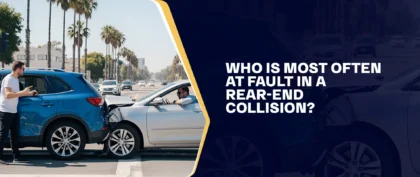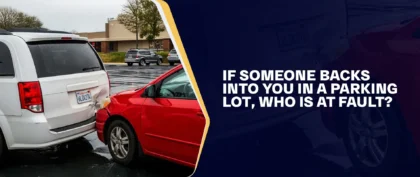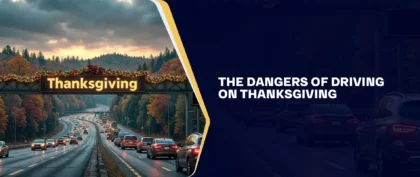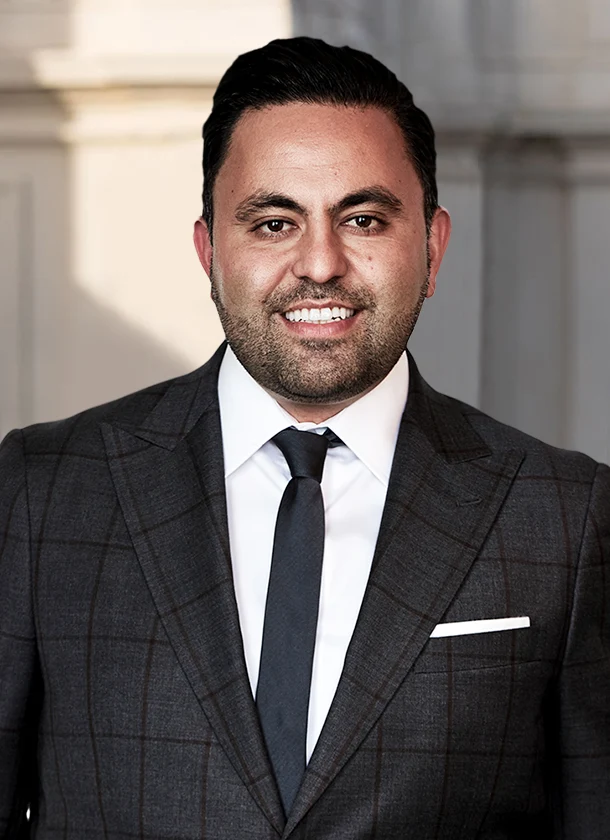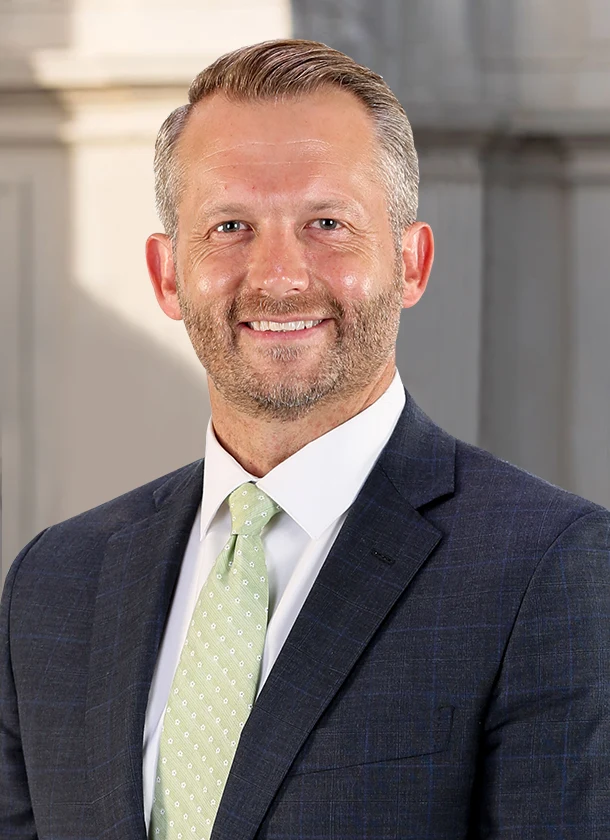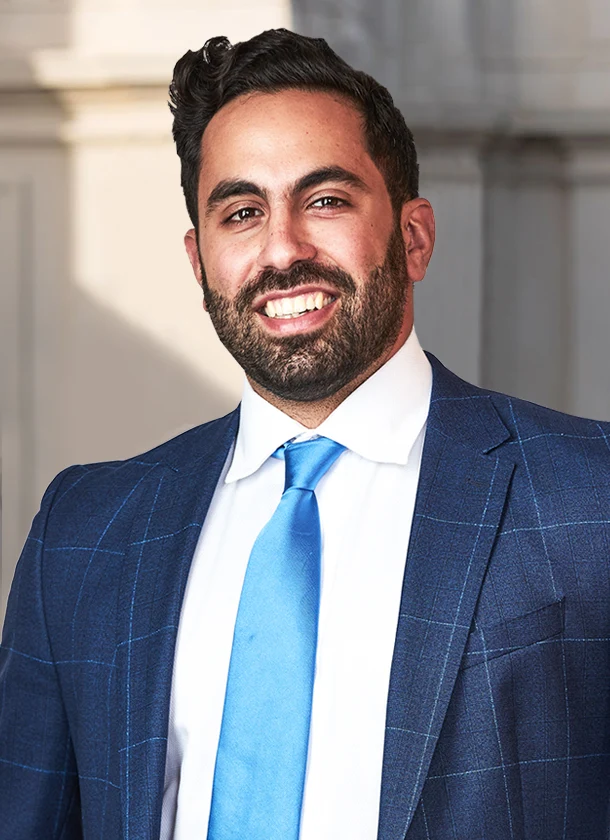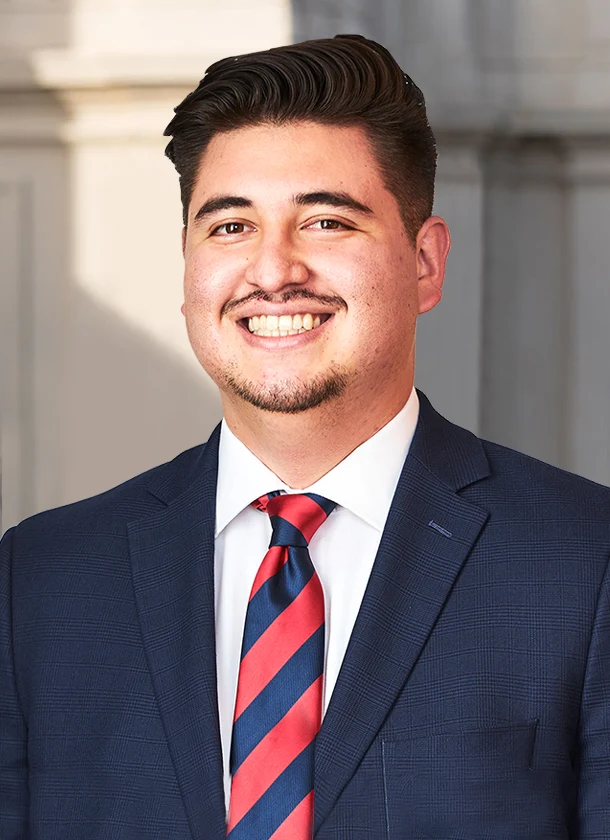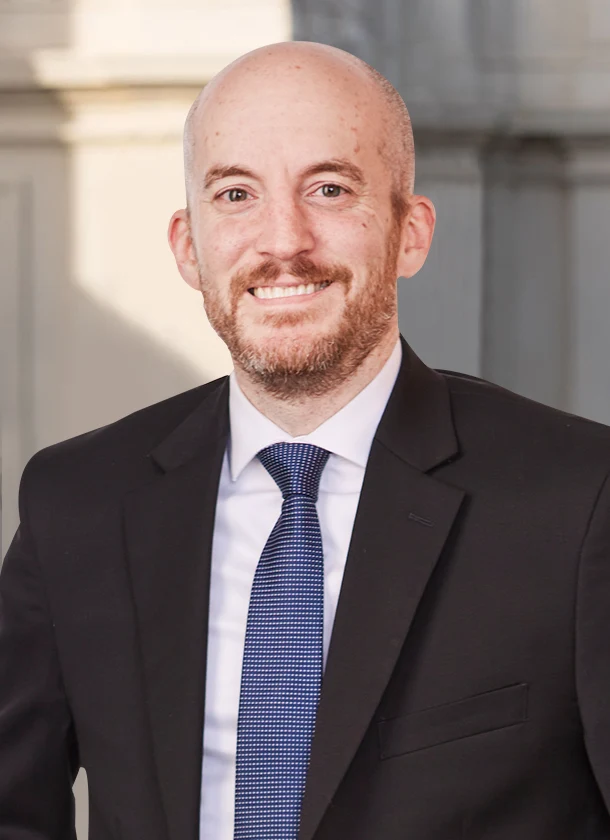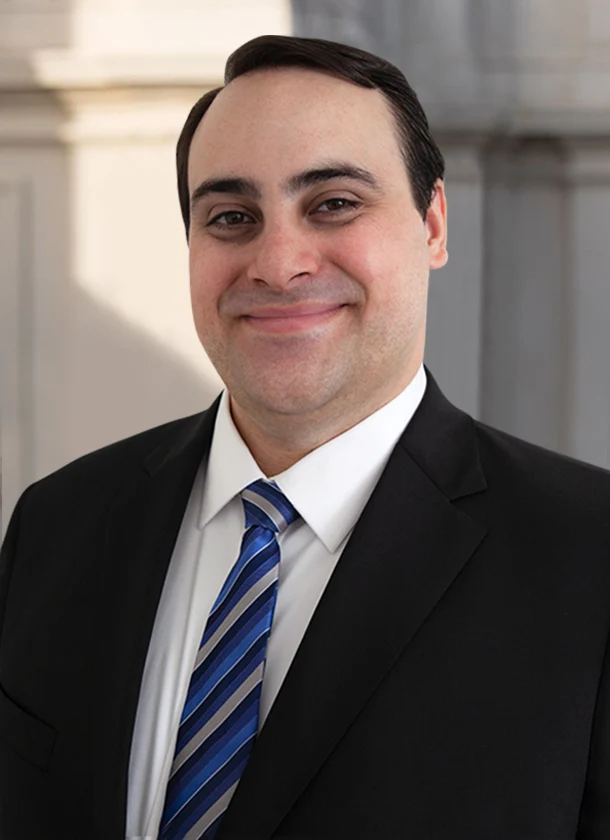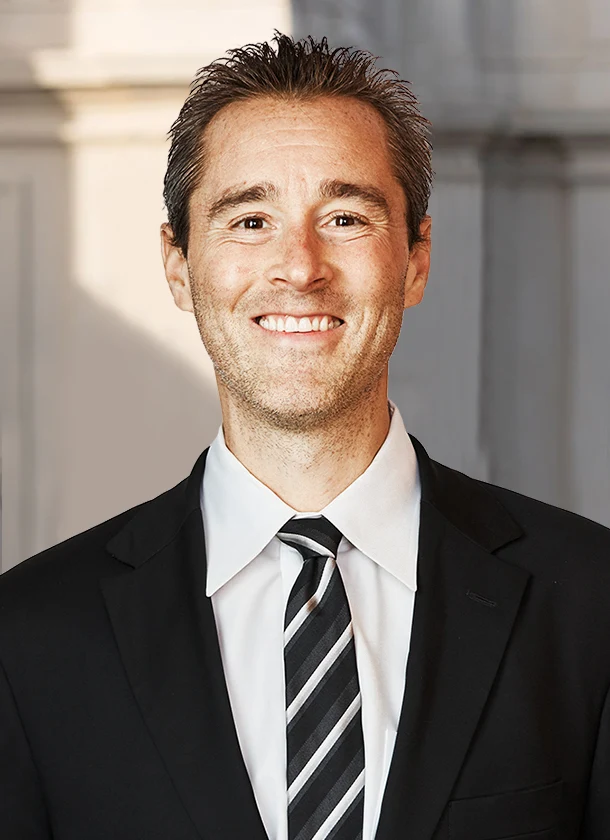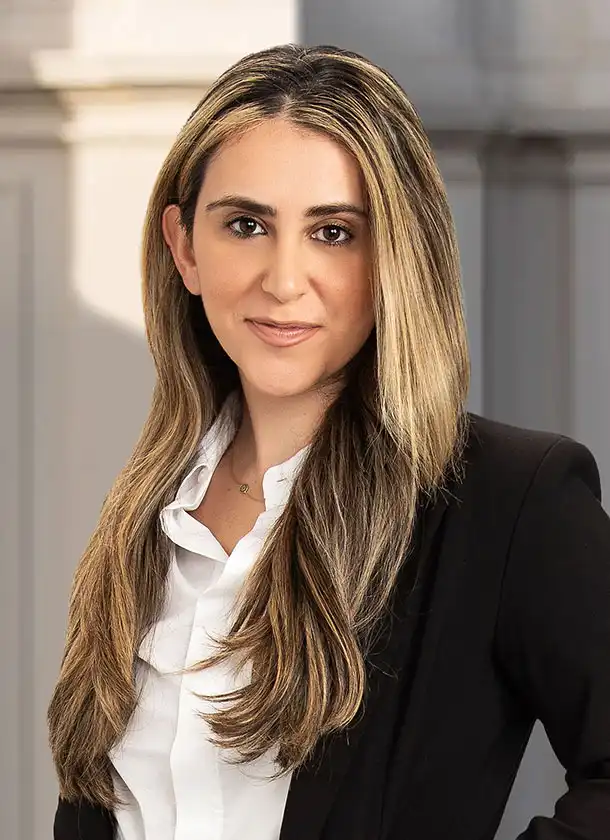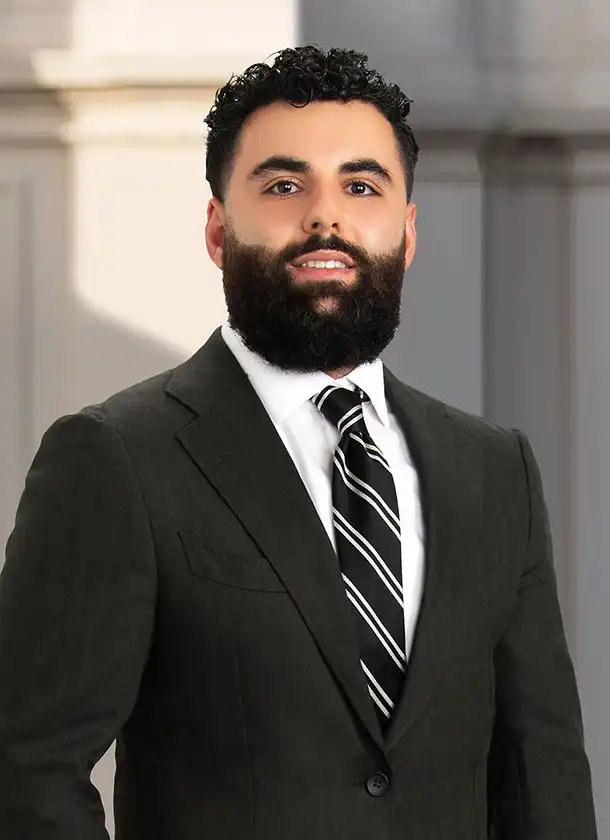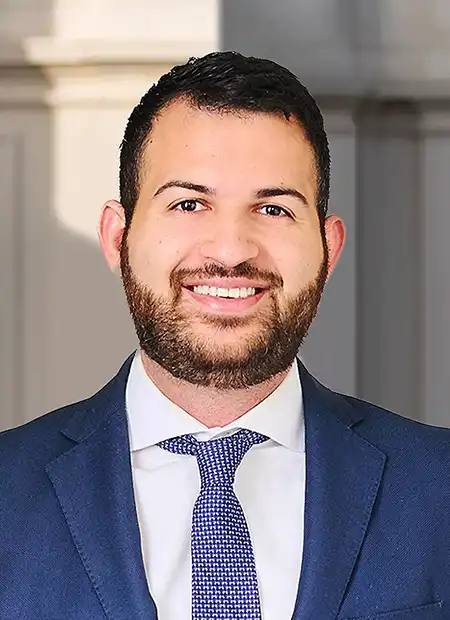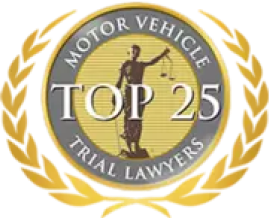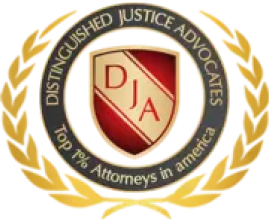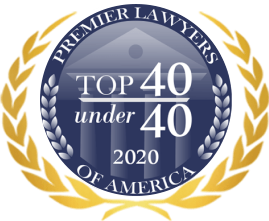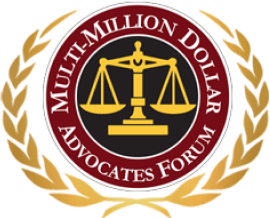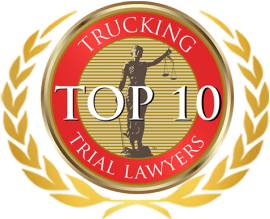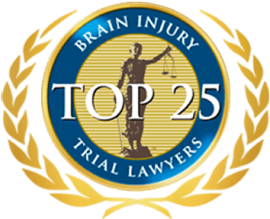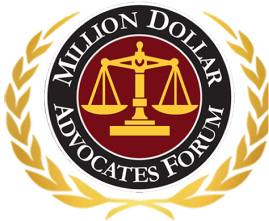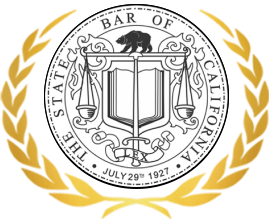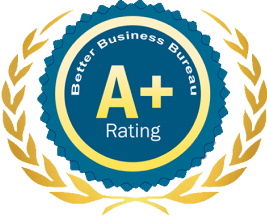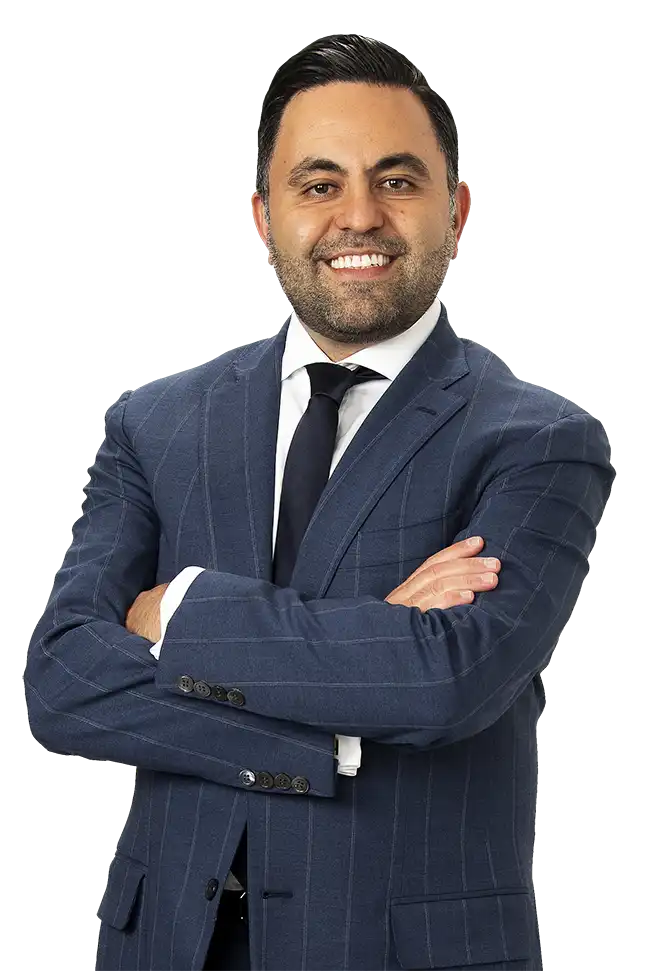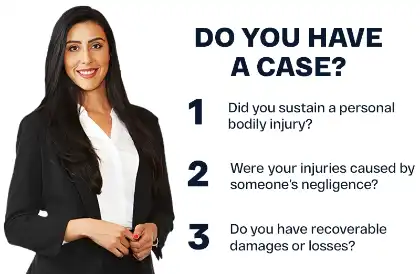TL;DR: Motorcycle crashes often happen due to speeding, distracted or impaired driving, unsafe turns, or drivers failing to see riders. Because motorcycles lack protective features, injuries are often severe. Common causes include blind spot dangers, lane splitting, and running red lights.
Table of Contents
Many motorcycle accidents occur when drivers speed, get distracted, drive under the influence, make unsafe turns, or fail to notice motorcycles in traffic. Even at low speeds, these collisions can cause serious injuries because motorcycles have no seatbelts, airbags, or protective frames.
In 2023, motorcyclists accounted for 15.5% of all U.S. traffic deaths, with California among the states reporting the highest fatality numbers. Urban areas, heavy tourism, and nighttime riding increase crash risk, while lane splitting, blind spots, and red-light running remain frequent factors.
Riders and drivers alike can help reduce accidents by staying alert, following traffic laws, and taking extra care at intersections. If you suffered injuries in a crash, the motorcycle accident lawyers at Arash Law can explain your options and help you seek compensation.
Key motorcycle crash facts:
- Crashes often involve speeding, impairment, or driver inattention.
- Blind spots and unsafe turns are significant factors in collisions.
- Lane splitting can raise crash risk in heavy traffic.
- Motorcyclists are 29 times more likely to die in a crash than car occupants.
- California records some of the highest fatality numbers in the nation.
What Are The Common Causes Of Motorcycle Accidents?
Motorcycle accidents happen more often than many people realize, and the injuries can be life-changing. The NSC’s 2023 Analysis stated that 6,335 motorcyclists died in crashes, and around 82,560 sustained injuries. About 583 motorcyclists were killed in crashes in CA alone.
These accidents occur for many reasons. Rider error, other drivers, and road or weather conditions can all play a part. The unique dangers of motorcycle riding, such as reduced visibility, less protection, and instability compared to cars, can make these risks even greater. Some common contributors include:
Distracted Driving
According to the NHTSA, distracted driving caused 3,275 deaths in the U.S. in 2023. A significant number of the fatalities were occupants of cars and trucks, but motorcyclists were also among the victims.
Distractions are dangerous for all drivers, but they pose an even greater risk for riders. Even alert drivers can sometimes fail to see motorcycles due to their smaller size or blind spots, and distractions only increase the risk.
Common distractions that reduce a driver’s ability to notice and react to riders include:
- Eating or drinking.
- Listening to music or podcasts.
- Talking on the phone.
- Checking emails or text messages.
- Daydreaming or losing focus.
When distractions result in crashes, injured riders may face steep medical costs and long recoveries. In these cases, motorcycle accident lawyers can evaluate the circumstances of the crash, explain available legal options, and pursue claims for compensation on behalf of victims.
Speeding
Curved roads and long highways may seem exciting to ride, but going too fast can lead to serious crashes. According to the National Highway Traffic Safety Administration (NHTSA):
- In 2022, 35% of motorcyclists who died in crashes were traveling faster than road or traffic conditions allowed.
- Among riders involved in fatal crashes, those aged 21 to 24 had the highest rate of speeding, at 51%.
Since speeding-related accidents are a common cause of severe injuries and fatalities, car accident lawyers frequently review whether excessive speed played a role when evaluating claims.
Driving Under The Influence (DUI)
In many places across the U.S., drivers aged 21 and older are not allowed to drive with a blood alcohol level (BAC) above 0.08%. According to the 2022 NHTSA report, 1,705 of the 5,934 motorcyclist fatalities that year were alcohol-impaired.
California is one of the states with a high number of fatal motorcycle crashes involving a BAC of 0.08+, followed by Texas, Florida, Ohio, and Arizona. According to NHTSA data, these five states reported the highest number of motorcyclist fatalities involving a BAC over 0.08:
| State | Total Fatalities | Fatalities with BAC above 0.08 g/dL. | Percentage of Total Fatalities |
| California | 620 | 202 | 33% |
| Texas | 537 | 180 | 34% |
| Florida | 639 | 171 | 27% |
| Ohio | 198 | 69 | 35% |
| Arizona | 221 | 60 | 27% |
However, DUI can also involve substances other than recreational drugs. Many legal, illegal, over-the-counter, and prescription medications may impair a person’s ability to drive safely. Some examples include:
- Muscle relaxants.
- Stimulants and appetite suppressants.
- Antiepileptic drugs or anticonvulsants.
- Medications for nausea and dizziness (antiemetics or antivertigo medications).
- Psychotropic medications.
- Medications for gastrointestinal, bladder, or urinary tract conditions.
Riding a motorcycle while under the influence may slow down a rider’s reaction time, making it harder to avoid danger and increasing the chance of a crash, serious injury, or even death. Riding a motorcycle requires balance, which makes impairment particularly dangerous.
This risk applies to all drivers, but the consequences are often more severe for riders. After such crashes, lawyers for motorcycle accident cases can review the details, explain available legal options, and guide victims through the claims process.
Running A Red Light Or Stop Sign
Ignoring traffic signals or stop signs disrupts the flow of traffic and can catch other drivers off guard, reducing their reaction time and increasing the risk of red light accidents.
According to the Insurance Institute for Highway Safety (IIHS), 1,086 people died in 2023, and more than 136,000 people suffered injuries due to accidents involving drivers who failed to stop at a red light. Although this problem affects all road crashes, a study shows it affects motorcycle crashes the most.
When a motorcycle is involved in a crash with another vehicle, the injuries are often more severe. Even a near-miss can throw a rider off their bike, resulting in broken bones, head trauma, or spinal injuries. Sacramento motorcycle accident lawyers can help injured riders understand their legal options and seek compensation for medical costs and other losses.
Unsafe Turning
Motorcycle crashes often happen at intersections, which are statistically the most dangerous locations for riders. A major cause of these crashes is unsafe turns. According to the 2022 NHTSA report, 44% of these accidents (1,436 cases) involved motorcycles going straight, passing, or overtaking when another vehicle was making a left turn.
These collisions happen mostly because:
- Drivers fail to see the motorcyclist.
- They misjudge the rider’s speed or distance.
- They are distracted or slow to react.
Since these crashes frequently result in severe injuries, accident lawyers who assist motorcycle riders can review the circumstances, assess liability, and help pursue compensation for medical bills, lost income, and other losses.
Blind Spot Dangers
Motorcycles are smaller than other vehicles, making them more likely to disappear into a car or truck’s blind spots. Blind spots are areas that drivers can check using mirrors. Some areas, known as blind zones, stay completely hidden even when drivers use mirrors correctly.
Because of this, crashes can happen in various ways, including the following:
- A driver changes lanes, unaware that a motorcycle is beside them.
- A driver merges onto a highway and fails to notice a rider already in the next lane.
- Motorcyclists riding alongside a large truck may go unnoticed when the vehicle shifts lanes.
- Even after checking mirrors, a driver may not see a fast-approaching rider moving alongside or overtaking from behind.
- A rider speeds up to pass, but the driver, seeing no other cars, assumes the lane is clear and moves over.
Hitting Fixed Objects
Motorcyclists are more likely than other drivers to crash into stationary objects. In 2022, 24% of deadly crashes happened when the rider hit fixed objects, like a tree or pole. This rate is higher compared to that of other vehicles:
- 16% for passenger cars.
- 13% for light trucks.
- 5% for large trucks.
For example, on October 2, 2024, a motorcyclist lost control while riding west on SR-299 near Burnt Ranch and crashed into a steep rock embankment. Despite CPR and emergency aid, he was pronounced dead at the scene. These types of collisions often cause severe or fatal injuries, and lawyers who handle motorcycle accidents can assist victims or their families in understanding their rights and possible legal options.
Lane Splitting
Lane splitting occurs when a motorcycle moves between two lanes of stopped or slow-moving traffic, usually during heavy congestion. Researchers from UC Berkeley analyzed data from June 2012 and August 2013:
- There were 5,969 motorcyclists involved in crashes during this period.
- Of these, 17% involved riders engaged in this maneuver at the time of the collision.
This practice is not always a traffic violation. Some states, including California, allow it. Still, motorcyclists should follow safe lane-splitting practices like:
- Avoid speeding while filtering between vehicles.
- Do this only when traffic moves at 40 mph or less, as advised by the CHP.
California’s scenic roads encourage motorcycle tourism across the state. In 2016, California introduced legal guidelines to promote safer behavior and reduce congestion. However, many riders continue to ignore these guidelines, resulting in accidents. For instance, the U.S. Navy reported a collision in San Diego on February 5, 2025, involving a rider commuting to work. While trying to change lanes on a bridge, he struck an oncoming vehicle and suffered multiple lower leg fractures.
Motorcycle Accident Insights: Conditions, Victims, And Safety Factors
Understanding when and how motorcycle crashes happen helps highlight the real risks riders face every day. Below is a breakdown of key statistics from the National Safety Council’s 2023 report on motorcycle traffic deaths:
| Motorcycle Traffic Death Insights (2023) | |||
| Factor | Category | Number of Deaths | Percentage |
| Weather | Clear/Cloudy | 5,933 | 93.65% |
| Rain | 129 | 2.04% | |
| Fog | 35 | 0.55% | |
| Other/Unknown | 238 | 3.76% | |
| Time of Day | Nighttime | 3,184 | 50.26% |
| Daytime | 3,117 | 49.20% | |
| Unknown | 34 | 0.54% | |
| Crash Location | Urban | 4,076 | 64.71% |
| Rural | 2,223 | 35.29% | |
| Helmet Use | Helmeted | 3,949 | 62.34% |
| Unhelmeted | 2,162 | 34.13% | |
| Unknown | 224 | 3.54% | |
| Crash Type | Single-Vehicle Crash | 2,279 | 35.97% |
| Two-Vehicle Crash | 3,578 | 56.48% | |
| Three Or More Vehicles | 478 | 7.55% | |
Many of these crashes occur in high-traffic areas, especially in regions with heavy tourism and daily motorcycle activity. In California, cities such as Los Angeles, San Francisco, San Diego, and Santa Monica are frequently hotspots for accidents. These areas have a mix of congested roads, unfamiliar drivers, and high numbers of riders, increasing the likelihood of collisions.
Motorcycle crashes carry major economic costs beyond the initial impact. These include emergency response, hospital care, rehabilitation, long-term treatment, medications, and insurance processing. Many victims also face lost income or reduced lifetime earnings due to disability. Property damage, funeral expenses, and public service costs add to the burden, making motorcycle accidents a significant cause of financially damaging traffic incidents.
What Can You Do To Reduce Motorcycle Crash Risk?
Since motorcycles don’t offer any protection and are harder to see, all drivers must be extra careful to prevent serious injuries and save lives. Both riders and drivers of other vehicles need to:
- Be extra cautious at night.
- Avoid blind spots and maintain a safe distance.
- Wear the right gear.
- Watch intersections closely.
- Follow traffic rules.
- Check your vehicle before driving or riding.
- Avoid riding in bad weather.
Here’s a more detailed breakdown:
Be Extra Careful At Night
Motorcycles are harder to see in the dark because they have only one headlight, which makes it difficult to judge their distance.
- Drivers should pay close attention when they see a single headlight; it may not be a car with a broken light but a motorcycle.
- Riders can improve their visibility by wearing bright or reflective clothing.
Avoid Blind Spots And Maintain A Safe Distance
Blind zones or “no zones” are areas around a vehicle that the driver cannot see directly or in mirrors. Common blind zones for large vehicles include:
- Front — A zone extending several feet ahead of the truck where the driver cannot see objects close to the bumper.
- Sides — Especially on the right, where visibility is more limited.
- Rear — A wide area directly behind a trailer with no rear-view mirror visibility.
These areas are dangerous for motorcyclists. Riding too close or lingering in a blind spot can cause serious crashes, especially during lane changes, turns, or sudden stops.
To stay safe, riders should:
- Keep a safe following distance, especially in heavy traffic or poor weather.
- Avoid traveling alongside vehicles in known blind zones.
- Be visible at all times by adjusting position when necessary.
Drivers also have a role in crash prevention. They should:
- Check mirrors and look over their shoulders before turning or changing lanes.
- Avoid following motorcycles too closely, allowing enough room to react if needed.
By maintaining a safe distance and staying out of blind spots, both riders and drivers can reduce the risk of serious collisions.
Wear The Right Gear
Motorcyclists should use protective gear to stay safe. Key items may include:
- A full-face helmet.
- Long pants and sleeves.
- Gloves and goggles
- Boots and knee pads.
Watch Intersections Closely
Some motorcycle crashes happen at intersections. Drivers cause these crashes when they become distracted or fail to take the proper safety precautions.
- Drivers should slow down and check closely before making a turn, especially when turning left. Doing so may help prevent collisions with motorcycles coming from the opposite direction.
- Motorcyclists should also maintain a slow speed and carefully observe their surroundings before crossing or turning at intersections.
Follow Traffic Rules
Motorcyclists and other motorists need to know and follow the traffic laws in their state or city, including rules about:
- Passengers
- Age Limits
- Speed Limits
- Helmet Requirements
- Bike Types And Engine Sizes
- Lane Splitting (where allowed).
- Equipment Standards
Check Your Vehicle Before Driving Or Riding
Before heading out, both drivers and motorcyclists should check:
- Brakes
- Tires
- Lights
- Fluid Levels
A quick inspection before every ride can identify minor problems before they become serious safety risks.
Avoid Riding In Bad Weather
Rain, snow, fog, and slippery roads make riding and driving more dangerous for everyone. The risks are greater for motorcyclists because they don’t have the full protection of an enclosed vehicle. Unlike cars, motorcycles leave riders exposed to rain, wind, and road debris, even when they wear helmets and face shields. Riders should avoid traveling in bad weather when possible. Meanwhile, drivers should slow down and stay especially alert.
When A Motorcycle Crash Happens, What Should I Do?
Motorcycle accidents can be overwhelming, especially in the moments right after they happen. Things may move quickly, and it’s common to feel unsure about what to do next. While every situation is different, many riders choose to take certain steps to help protect their health, safety, and potential legal claim. Here are some steps to consider:
Prioritize Safety
If possible, move out of traffic to a safer location. Using hazard lights or visible signals may help alert other drivers to the crash scene and reduce further risk.
Call For Emergency Assistance
In California, calling 911 brings paramedics and law enforcement to the scene. They can provide medical care and document the crash in an official report, which may later support an insurance or legal claim.
Cooperate With Authorities
If police or first responders request information, staying calm and providing accurate details may help with documentation. In some cases, sharing photos or videos of the crash can assist with reports.
Get Checked By A Doctor Promptly
Even when injuries seem minor, visit a medical provider shortly after a crash. Some injuries don’t appear right away, and early treatment can support the healing process. Medical records can also serve as important evidence in support of a claim. It’s also common for people to report any new or delayed symptoms to their doctor.
Document The Crash
Take photos or videos of the scene, especially if it’s safe to do so. These images may help demonstrate what happened and support any future insurance or legal claims. Useful visuals may include:
- The motorcycle and any other vehicles involved.
- Road conditions, including potholes, gravel, or debris.
- Skid marks, oil spills, or glass on the roadway.
- Street signs, traffic signals, or intersection layouts.
- Helmet or dash cam footage (if available).
- Nearby security camera recordings from businesses or homes.
Gather Important Information
Those involved may exchange basic details. This information can help later during insurance or legal proceedings. Useful data to collect:
- Names and contact details of everyone involved.
- Insurance company names and policy numbers.
- License plate numbers and vehicle descriptions.
- Contact information for any witnesses at the scene.
If there are questions about how the crash happened, witness statements may be especially helpful.
Follow Up On Treatment And Track Expenses
Some injured victims continue medical care in the days or weeks after the crash. Tracking appointments, medications, and time away from work can be important in a personal injury claim. Keeping receipts, bills, and notes about pain or limitations may help document the physical and financial impact of the accident.
Contact Your Insurance Company
Notify your insurance provider promptly after a crash, even if the other driver was at fault. Prompt notification may be required under the terms of the policy and can help start the claims process.
Consider Speaking With A Motorcycle Accident Lawyer
If the crash caused serious injuries or damage, it may help to talk to a motorcycle accident attorney. They can guide you through the legal steps and explain your rights based on your situation.
Frequently Asked Questions On How Motorcycle Collisions Happen
Below are common questions people ask after a motorcycle accident. While every case is different, these answers may help provide general information. If you have specific questions, contact us to speak with our motorcycle accident lawyers for a free case review.
How Do Most Motorcycle Crashes Happen?
Motorcycle crashes often occur because of driver errors, risky behavior, or poor visibility. Common causes include speeding, distracted driving, alcohol or drug use, running red lights, and making unsafe turns or lane changes. Many accidents also occur when drivers fail to check their blind spots or notice motorcycles in traffic. Lane splitting and poor road conditions can also increase the risk, especially in heavy traffic.
According to the National Safety Council, motorcyclists accounted for 15.5% of all traffic fatalities and 3.4% of all injuries in the U.S. in 2023. These crashes often happen in urban areas and at night, where visibility and traffic congestion are major factors. Since motorcycles offer little protection compared to cars, riders are more likely to suffer serious injuries. San Bernardino motorcycle accident attorneys can investigate the cause of a crash and help pursue accountability from the at-fault party.
Why Are Motorcycle Accidents So Dangerous?
According to the Insurance Institute for Highway Safety, motorcyclists are 29 times more likely to die in a crash than occupants of other vehicles. This high risk is largely due to the lack of protection motorcycles provide.
Unlike cars, motorcycles do not have seatbelts, airbags, or a protective frame. They are also harder to control on slick roads, gravel, or during sudden stops. Even with helmets and safety gear, riders still face a high risk of serious harm. Common injuries include:
- Broken Bones
- Traumatic Brain Injuries
- Spinal Cord Injuries
- Road Rash
- Internal Injuries
These injuries can be life-changing and, in some cases, fatal. The healing process may involve:
- Surgery
- Physical Therapy
- Chiropractic Care
- Ongoing Medical Treatment
These injuries can result in long recovery periods, expensive medical care, and loss of income. California motorcycle injury attorneys understand the severe impact of these accidents and can build a case that accounts for both immediate and long-term damages.
Can I Still Sue The Driver If I Didn’t Have A Helmet On At The Time Of The Accident?
California law requires all motorcyclists and passengers to wear helmets. However, not wearing one does not automatically make someone at fault or stop them from filing a legal claim.
That said, the other party or their insurance company may argue that the injuries were more severe because of the lack of a helmet. This could affect how compensation is calculated or offered during settlement discussions.
Several factors may come into play:
- Whether wearing a helmet could have reduced the severity of the injuries.
- Whether the helmet law violation contributed to the crash or just the injuries.
- How the people involved share liability.
Motorcycle accident lawyers can help you understand how these issues could affect your case.
How Long Will My Motorcycle Accident Case Take To Be Resolved?
The time it takes to resolve a motorcycle accident case can vary. Some cases settle in a few months, while others may take over a year.
Factors that affect the timeline include:
- How severe the injuries are, and how long recovery takes.
- The time needed to gather medical records and other evidence.
- Whether there are disputes about fault.
- If the case is settled out of court or goes to trial.
- Court scheduling and availability if litigation becomes necessary.
Some injured individuals wait until they reach maximum medical improvement (MMI) before pursuing compensation. This allows doctors and legal teams to consider both current and future medical needs.
Consulting with lawyers for motorcycle accidents may help clarify what timeline is applicable based on the specific details of the case.
Will I Need To Go To Court In My Motorcycle Accident Case?
Motorcycle accident cases usually settle without going to court. Your motorcycle accident attorneys will work to reach an agreement with the insurance company to help you avoid the stress and time of a trial. However, your case may go to court if:
- The settlement offer may not reflect your actual damages.
- The at-fault party disputes liability.
Even if your case reaches court, you may be able to settle before the trial begins. Motorcycle accident lawyers can help you understand whether your case is likely to settle or go to trial and what steps are involved in either scenario.
Do I Need A Personal Injury Lawyer After A Motorcycle Accident?
Hiring a personal injury lawyer is not required, but many injured victims choose to speak with one, especially if their injuries are serious or if there are disputes about fault.
A personal injury attorney may be able to help by:
- Reviewing the facts to see if a claim may be valid.
- Collecting evidence such as medical records and police reports.
- Estimating the full value of losses, including medical bills and lost wages.
- Communicating with insurance companies.
- Offering legal guidance if the case becomes more complex or moves toward court.
California follows a pure comparative negligence system. Under this system, someone injured in a crash may still be able to seek compensation, even if they were partly at fault. However, the amount may be reduced based on the percentage of fault assigned.
When Motorcycle Crashes Happen, Accident Lawyers Can Help
Motorcycles offer a sense of freedom and speed, but they also come with greater risk. Without seatbelts, airbags, or protective frames, riders are more likely to suffer serious injuries or worse in a crash.
If you or someone close to you suffered injuries in a motorcycle accident, you may be able to seek compensation for:
- Medical Expenses
- Lost Income
- Pain And Suffering
- Property Damage
To pursue compensation, injured riders typically need to show that someone else was at fault. This process often involves gathering evidence, reviewing medical records, and meeting legal deadlines.
The accident lawyers at Arash Law have experience handling motorcycle crash cases across California. If your injuries make travel difficult, we can arrange a meeting at a place and time that suits you. If you prefer to speak in your native language, let our team know so we can find a way to make that possible.
We offer free initial consultations so you can learn more about your legal options. If you choose to move forward, our motorcycle accident lawyers work on a contingency fee basis, collecting legal fees only if your case results in a settlement or a verdict. If there’s no compensation, you won’t owe us attorneys’ fees. There may be other case-related costs that may be charged separately, regardless of the outcome. This arrangement will be discussed during your consultation and will be outlined clearly in a written agreement.
Call us at (888) 488-1391 or fill out our “Do I Have A Case?” form here for a free case assessment. Upon considering our legal services for your case, you can also explore how our onboarding process works.

